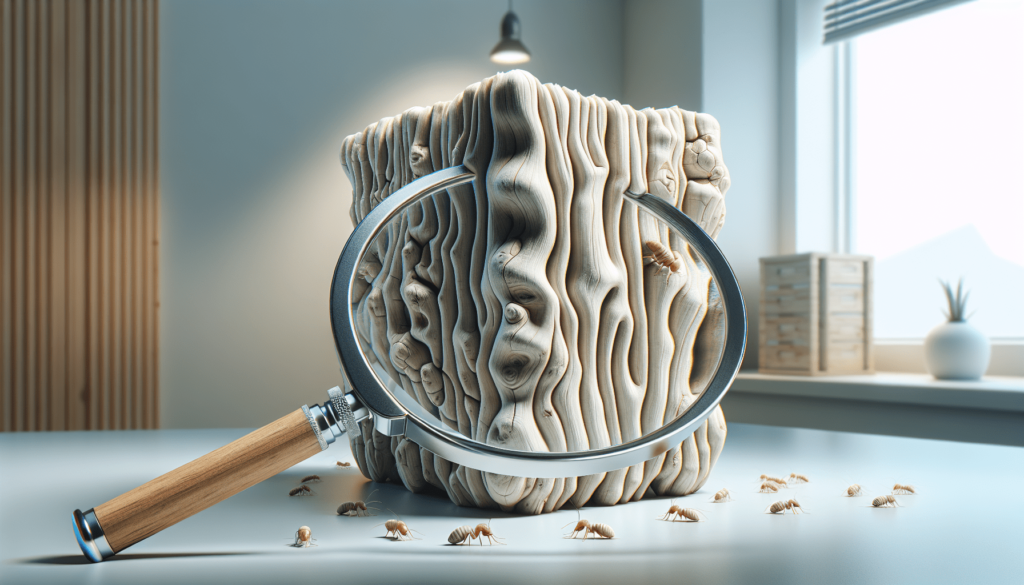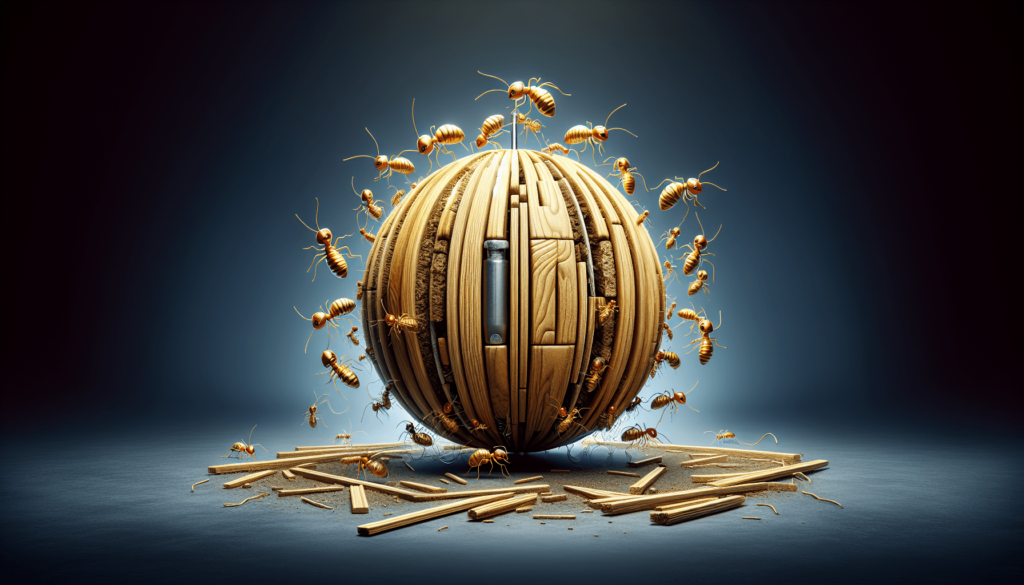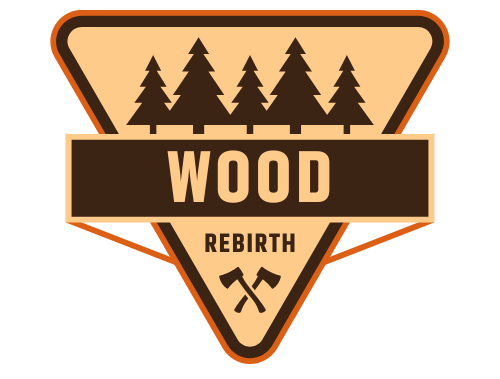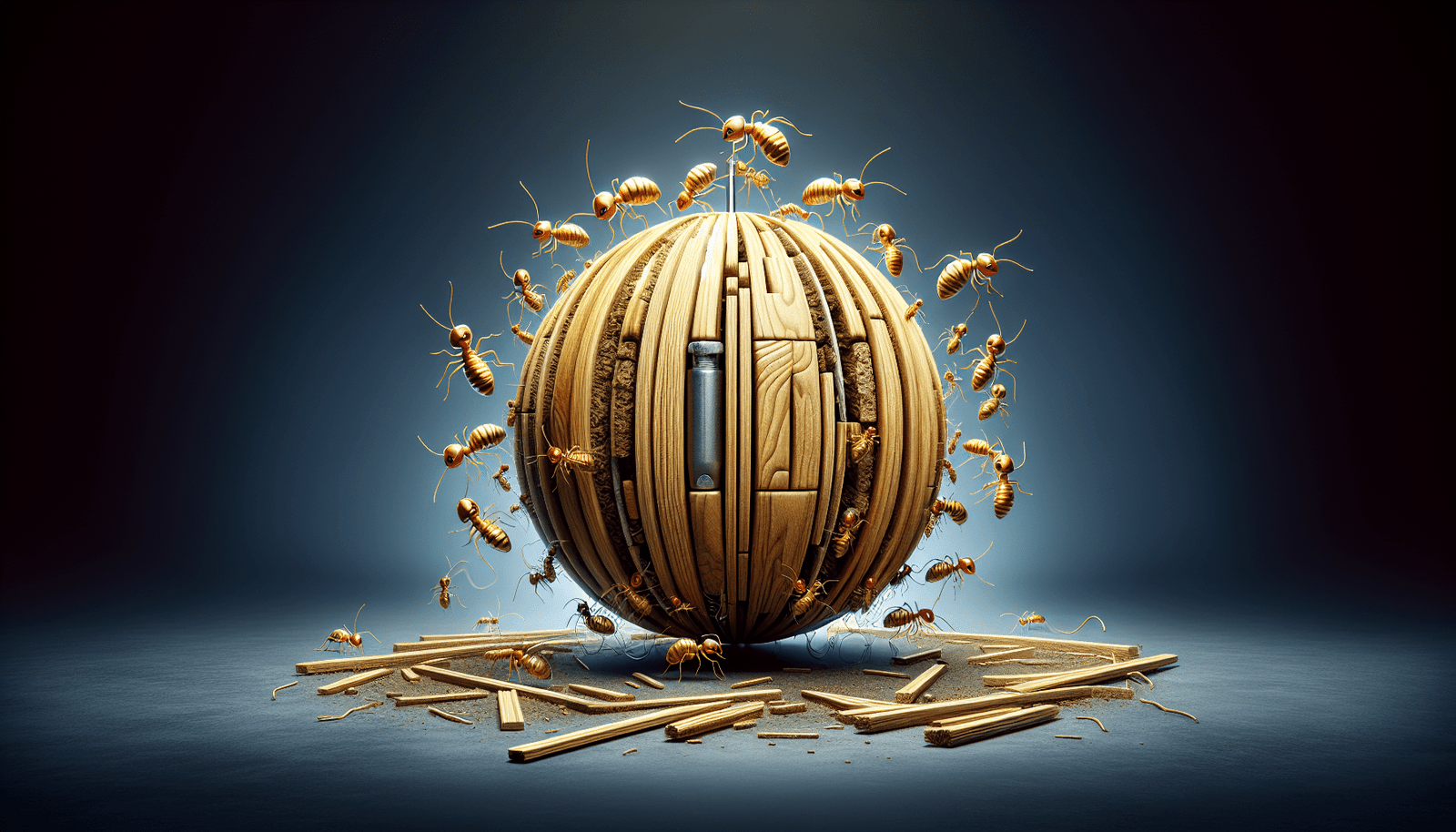If you’ve ever wondered about the most effective wood to use while protecting your home from pesky termites, you’re not alone. The choice of wood can significantly impact your home’s resistance to these destructive insects. In this article, we’ll explore the top contenders for the title of “best wood to avoid termites.” By understanding the characteristics of various types of wood and their susceptibility to termite infestation, you can make an informed decision to safeguard your property. So, let’s dive into the world of wood, termites, and the battle for termite-free homes!
1. Natural Termite-Resistant Woods
Termites can cause serious damage to wooden structures, which is why it’s important to choose the right type of wood that is naturally resistant to these pests. Here are some natural termite-resistant woods that you can consider for your construction projects:
1.1 Cedar
Cedar wood is one of the most popular choices when it comes to termite-resistant woods. It has natural oils and resins that give it a strong aroma, which termites find unappealing. This makes cedar wood an effective deterrent against termite infestations. In addition to its termite-resistant properties, cedar is also known for its durability, making it a great choice for outdoor projects such as decks and fences.
1.2 Redwood
Redwood is another type of wood that is highly resistant to termites. It contains tannins, which are natural compounds that repel termites. Redwood is also known for its beautiful color and grain, making it a popular choice for outdoor furniture and siding. However, it’s worth noting that redwood can be quite expensive compared to other options.
1.3 Cypress
Cypress wood is naturally resistant to termites due to its high content of cypressesene, a compound that deters these pests. It is a popular choice for outdoor applications such as siding, decking, and fencing. Cypress wood is known for its natural beauty and durability, making it a great option for both aesthetic and practical reasons.
1.4 Teak
Teak wood is widely recognized for its natural resistance to termites and other pests. It contains natural oils that act as a deterrent, making it a popular choice for outdoor furniture, boat decks, and other applications that are exposed to moisture. Teak wood is also known for its durability and strength, making it an excellent investment in terms of longevity.
2. Pressure-Treated Woods
Pressure-treated woods are another option to consider when it comes to termite resistance. These woods have been infused with chemicals that make them less appealing to termites. Here are some common types of pressure-treated woods:
2.1 Treated Pine
Treated pine is one of the most widely used types of pressure-treated wood. It is infused with chemicals such as copper azole or alkaline copper quat, which make it resistant to termites and fungal decay. Treated pine is an affordable option and can be used for various applications such as decking, fences, and outdoor furniture.
2.2 Treated Hem-Fir
Treated hem-fir is another popular choice for termite-resistant wood. It is treated with similar chemicals as treated pine and offers good resistance against termites and fungal decay. Treated hem-fir is commonly used for outdoor structures like decks and fences, as well as for interior applications such as framing.
2.3 Treated Ash
Ash wood that has been pressure-treated with preservatives can also provide termite resistance. The treatment process helps to penetrate the wood fibers and make it less appealing to termites. Treated ash is commonly used for various structural and decorative purposes.
2.4 Treated Oak
Treated oak wood is another option that offers termite resistance. It is treated with preservatives to enhance its durability and make it less vulnerable to termite infestation. Treated oak is commonly used for outdoor applications such as decking, fencing, and siding.

3. Tropical Hardwoods
Tropical hardwoods are known for their durability and resistance to pests, including termites. Here are some popular choices when it comes to termite-resistant tropical hardwoods:
3.1 Ipe
Ipe wood, also known as Brazilian Walnut, is highly resistant to termites, rot, and decay. It is considered one of the toughest and most durable woods available. Ipe wood is commonly used for outdoor applications such as decking, siding, and furniture. It is known for its rich color and natural beauty.
3.2 Mahogany
Mahogany is another tropical hardwood that offers excellent resistance to termites. It is known for its natural durability and resistance to rot and decay. Mahogany wood is often used for outdoor furniture, decking, and siding. It has a rich, reddish-brown color and adds an elegant touch to any project.
3.3 Brazilian Walnut
Brazilian Walnut, also known as Ipe, is an incredibly dense and durable tropical hardwood that is highly resistant to termites. It has a natural resistance to rot and decay, making it an excellent choice for outdoor applications such as decks, fences, and siding. Brazilian Walnut has a dark brown color and a distinctive grain pattern.
3.4 Balau
Balau wood is another termite-resistant tropical hardwood that is commonly used for outdoor applications. It has excellent moisture resistance and durability, making it ideal for decking, siding, and other exposed structures. Balau wood has a medium to dark brown color and offers a classic look to any project.
4. Composite Woods
In addition to natural and treated woods, composite woods are another option to consider for termite resistance. Composite woods are made by combining wood fibers or particles with synthetic materials. Here are some common types of composite woods:
4.1 Engineered Wood
Engineered wood, also known as composite wood, is a term used to describe various types of wood products that are made by binding or fixing the strands, particles, fibers, or veneers of wood together using adhesives. Engineered wood is often treated to enhance its resistance to termites and other pests. It is commonly used for flooring, furniture, and structural applications.
4.2 Fiber Cement Board
Fiber cement board is a composite material made from a combination of cement, sand, and cellulose fibers. It is highly resistant to termites, rot, and fire. Fiber cement board is commonly used for siding, roofing, and other exterior applications. It offers excellent durability and requires minimal maintenance.
4.3 Plywood
Plywood is a type of composite wood made by gluing together thin layers of wood veneers. It is a versatile and cost-effective option for various applications. Plywood can be treated with chemicals to improve its resistance to termites and other pests. It is commonly used for cabinets, furniture, and flooring.

5. Artificial Synthetic Woods
In addition to natural and composite woods, there are also artificial synthetic woods that can be used as an alternative to traditional wood. These materials are made from synthetic polymers and often mimic the appearance of real wood. Here are some examples:
5.1 Plastic Lumber
Plastic lumber is made from recycled plastic materials and is highly resistant to termites, rot, and moisture. It is an eco-friendly option and requires minimal maintenance. Plastic lumber is commonly used for outdoor furniture, decking, and landscaping projects.
5.2 Vinyl Siding
Vinyl siding is a popular choice for exterior cladding due to its durability and low maintenance requirements. It is made from PVC (polyvinyl chloride), a synthetic polymer that is not attractive to termites. Vinyl siding is available in a wide range of colors and styles, making it a versatile option for any architectural style.
5.3 PVC Trim
PVC trim is another synthetic wood alternative that offers termite resistance. It is commonly used for trim and molding applications, both indoors and outdoors. PVC trim is available in various shapes and sizes and can be easily installed and maintained.
6. Wood Treatments to Prevent Termites
In addition to choosing termite-resistant woods, there are also wood treatments that can be applied to enhance the resistance of wood against termites. These treatments can provide an added layer of protection and help to minimize the risk of termite infestation. Here are some common wood treatments:
6.1 Borate Treatment
Borate treatment involves applying borate-based chemicals to the wood surface or injecting them into the wood. Borate treatments create a barrier that termites are unable to penetrate, effectively deterring them from infesting the wood. Borate-treated wood is commonly used for framing, interior structural elements, and other vulnerable areas.
6.2 Wood Preservatives
Wood preservatives are chemicals that are applied to the wood surface to protect it from termites and other pests. Pressure-treated woods, as mentioned earlier, are infused with wood preservatives that provide long-lasting termite protection. It’s important to follow the manufacturer’s guidelines for the appropriate use of wood preservatives and to ensure proper safety precautions.
6.3 Water Sealants
Water sealants are often used to protect wood from moisture damage, but they can also help to deter termites. By sealing the wood surface, water sealants make it less attractive for termites to infest. Regular application of water sealants can help to maintain the integrity and termite resistance of the wood.
7. Factors Affecting Termite Resistance
While choosing termite-resistant woods and applying appropriate wood treatments are important, there are also certain factors that can affect the termite resistance of wood. Understanding these factors can help you make informed decisions and take necessary precautions. Here are some key factors:
7.1 Density and Hardness
The density and hardness of wood play a significant role in its resistance to termites. Hardwoods are generally more resistant to termites compared to softwoods. The denser the wood, the more difficult it is for termites to penetrate and feed on it. When selecting wood for termite resistance, consider the density and hardness of the wood species.
7.2 Moisture Content
Termites are attracted to moist environments, as they require water to survive. Wood with high moisture content is more susceptible to termite infestation. Proper moisture control is essential to prevent termite problems. Ensure that the wood is properly seasoned, and implement appropriate moisture management strategies, such as proper ventilation and drainage.
7.3 Extractives and Chemical Compounds
Certain wood species contain natural extractives and chemical compounds that act as natural deterrents to termites. These natural compounds can make the wood less attractive or even toxic to termites. When selecting termite-resistant woods, consider the presence of these natural extractives and chemical compounds.
7.4 Natural Resistance
Some wood species have inherent natural resistance to termites due to their chemical composition or physical characteristics. These woods naturally repel or deter termites without the need for additional treatments. Cedar, redwood, and cypress, as mentioned earlier, are examples of woods with natural resistance to termites. Consider these naturally resistant woods for termite-prone areas.
8. Construction Techniques to Minimize Termite Infestation
In addition to choosing termite-resistant woods and applying appropriate treatments, there are also construction techniques that can help to minimize the risk of termite infestation. By implementing these techniques, you can create a more termite-resistant environment. Here are some construction techniques to consider:
8.1 Proper Wood Moisture Control
One of the key factors in preventing termite infestation is proper wood moisture control. Avoid allowing wood to come into direct contact with the ground, as soil moisture can attract termites. Use moisture barriers, such as plastic sheeting or concrete, to create a separation between the wood and the ground. Additionally, ensure proper ventilation and drainage to prevent moisture buildup.
8.2 Physical Barriers and Pest Management Systems
Physical barriers and pest management systems can be effective in preventing termites from accessing the structure. Installing metal screens or mesh around the foundation can act as a physical barrier, preventing termites from entering. Moreover, implementing a comprehensive pest management system that includes regular inspections and treatments can help detect and address termite issues early on.
8.3 Termite-Resistant Construction Practices
Certain construction practices can also enhance the termite resistance of a structure. For example, using concrete or steel for foundation elements can reduce the risk of termite infestation. Incorporating termite-resistant materials, such as treated lumber or composite woods, in vulnerable areas can provide added protection. Additionally, sealing all cracks and openings in the structure can prevent termite entry.
9. Maintenance and Inspection for Termite Prevention
While choosing termite-resistant woods and implementing preventive techniques are important, regular maintenance and inspections are also crucial to prevent termite infestation. Here are some key practices to consider for termite prevention:
9.1 Regular Inspection
Regular inspections by a trained professional can help detect early signs of termite activity. An experienced pest control specialist can identify potential entry points, signs of wood damage, and other indicators of termite infestation. Early detection allows for prompt treatment, minimizing the damage and cost of repairs.
9.2 Moisture Management
As mentioned earlier, moisture control is crucial for termite prevention. Regularly check for leaks, condensation, or any other sources of excess moisture in and around the structure. Promptly address any moisture issues to prevent creating an attractive environment for termites.
9.3 Prompt Repairs
If any termite damage or signs of infestation are detected during inspections, it is important to address the issue promptly. Schedule repairs and treatment as soon as possible to prevent further damage and limit the spread of termites. Consulting with a professional pest control specialist can help ensure effective treatment and long-term termite prevention.
10. Conclusion
Choosing the right type of wood and implementing proper preventive measures are crucial in minimizing the risk of termite infestation. Natural termite-resistant woods such as cedar, redwood, cypress, and teak provide inherent resistance to termites. Pressure-treated woods, tropical hardwoods, composite woods, and artificial synthetic woods offer additional options for termite-resistant construction. Wood treatments, such as borate treatments and wood preservatives, can further enhance the termite resistance of wood. Factors such as density, moisture content, extractives, and natural resistance can affect the termite resistance of wood. Proper construction techniques, regular maintenance, and inspections are also important in preventing termite infestation. By considering all these factors and taking the necessary precautions, you can build structures that are less vulnerable to termites and ensure long-term protection for your investments.

Hi, I’m James Gheen, the creator behindWoodRebirth.com. As someone passionate about sustainability and environmental stewardship, I created this pioneering online platform to change how we approach wood waste and pallet disposal. Through detailed recycling and disposal guides, creative DIY projects, and upcycling inspirations, I aim to inspire individuals and businesses to adopt eco-friendly practices in their wood waste management. At WoodRebirth.com, we foster a vibrant community focused on education and engagement, encouraging the sharing of ideas and success stories. Join me in our mission to give wood waste a new lease on life, making a tangible impact on our environment, one pallet at a time.

